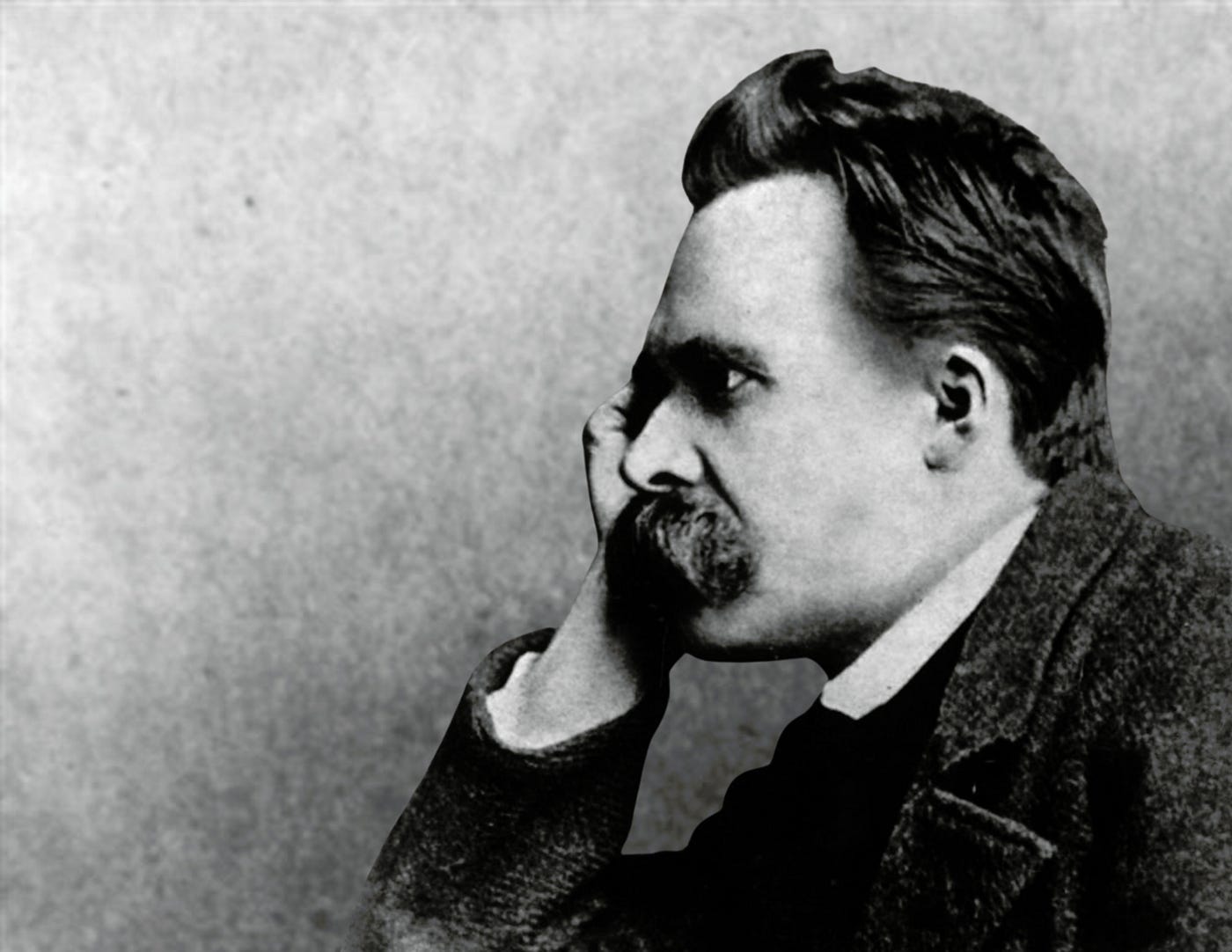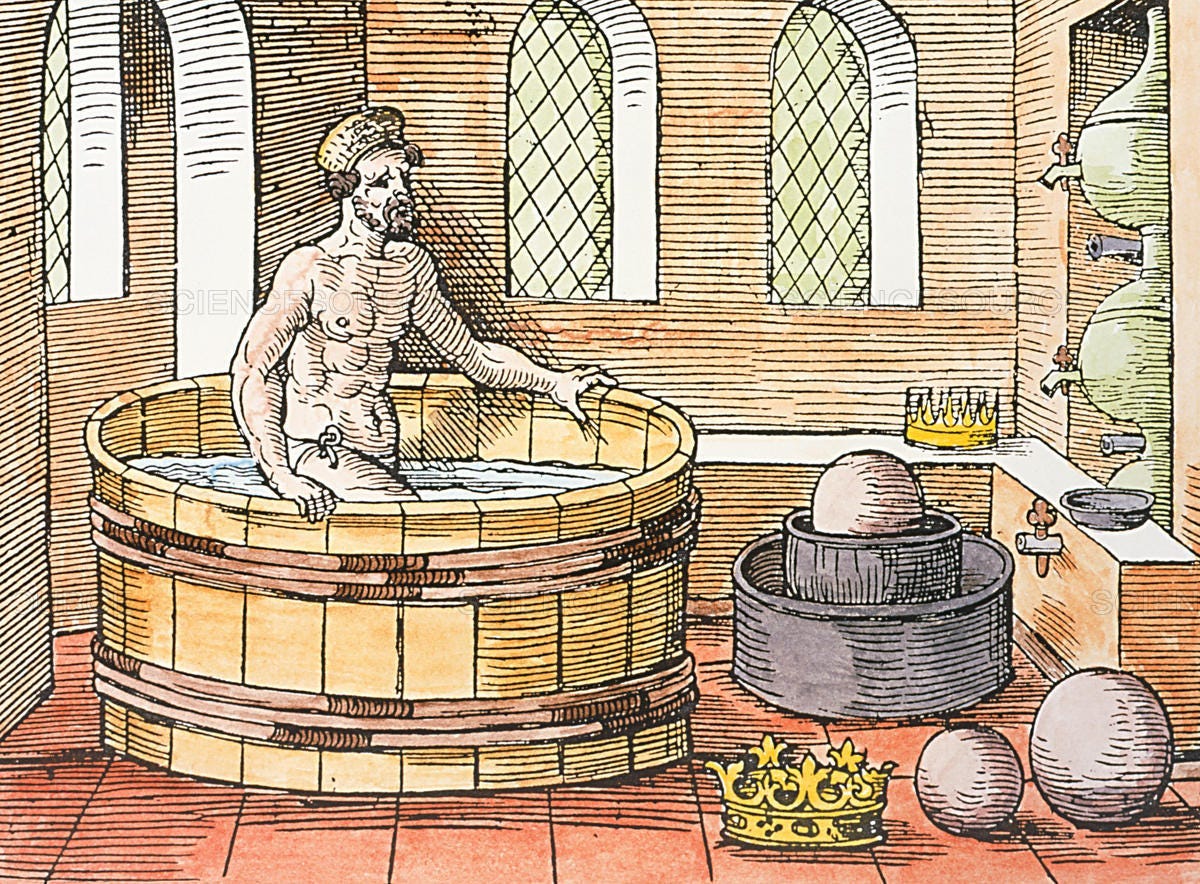Over-Caffeinated, Under-Sexed, and Very, Very Clean
Part 2 of what I learned from trying to live like a genius

Are geniuses just more prone to quirky behavior, or did their quirks fuel their genius? And if it’s the latter, can you train your brain to think like them?
Last week, I set out to investigate whether acting like a genius can turn you into a genius. Despite some very chilly testicles (thanks for nothing, Ben Franklin!), the answer is… maybe?
Here’s the second (and final) installment of my quest to become the most brilliant person in my social circle.
5. Way Too Much Coffee
Prominent Practitioners
French writers had voracious appetites for coffee. Both Honoré de Balzac (The Human Comedy) and Voltaire (Candide) drank between forty and fifty cups every day. After enough coffee, Balzac once wrote, “Ideas begin to move like the battalions of the Grand Army on the battlefield.” Beethoven insisted on counting out his coffee beans; he required no less than 60 beans per cup, according to a biographer.
The Test
William DePaolo, Ph.D., a molecular microbiology and immunology professor at the Keck School of Medicine at the University of Southern California, warned me that a caffeine overdose could lead to symptoms that are “frighteningly similar to those of a psychiatric disorder,” including rambling thoughts and hallucinations. Just five cups is enough to cause a psychotic reaction, according to an Australian study.
After twelve 8-ounce cups in just under two hours—my usual is one or two—my heart sounded like a very pissed-off Tito Puente and I lost the ability to blink. But no hallucinations. I also didn’t feel particularly inspired. I typed a little faster, but not because the ideas were coming faster. I also pooped like I’d taken a handful of laxatives.
The Science
Unlikely, says Stephen Braun, author of Buzz: The Science and Lore of Alcohol and Caffeine. “The brain adapts relatively quickly to the stimulation,” he says. “Once tolerance sets in, you won’t be squeezing much extra creative juice from your brain.”
There is the theory, however, that coffee shops can promote creativity. University of Illinois researchers found that the level of ambient noise in a coffee shop—the sweet spot is right around 70 decibels—triggers our minds to think more creatively.
6. Wearing the Same Clothes
Prominent Practitioners
In his later years, Albert Einstein wore mostly the same outfit, a grey suit and no socks. Apple co-founder Steve Jobs had his black turtlenecks and jeans. Facebook CEO Mark Zuckerberg owns “maybe about 20” (in his words) identical grey T-shirts, Segway inventor Dean Kamen prefers an all-denim look, and country legend Johnny Cash got the nickname “Man in Black” because, you know.
The Test
I didn’t have high hopes for this one, but after a week of wearing the same lumpy old college sweatshirt and my favorite threadbare shorts, I noticed a big difference in my mental clarity. Maybe because it didn’t feel like work anymore. When you’re dressed like a slob, it’s hard to feel like you’re on the clock. I was suddenly able to multitask, and creative challenges that once took hours could now be accomplished in minutes.
“I’m like a supercomputer,” I told my wife.
“Well, you smell like a train hobo,” she said.
The Science
Makes sense. “People have a finite amount of mental energy,” says Daniel Levitin, PhD, a cognitive psychologist and neuroscientist, and author of The Organized Mind: Thinking Straight in the Age of Information Overload. “If you spend your brainpower making many tiny decisions such as what to wear or eat before deciding on something more important, your neural resources will have been depleted, and your judgment impaired.” Einstein and Jobs “didn’t want to waste valuable energy making inconsequential decisions about their clothes.”
Neurons, which transmit signals to and from the brain, are living cells with metabolisms needing glucose to operate. Your neural network relies on you to prioritize decisions. “Eliminating inconsequential decisions, such as wardrobe choices, helps retain resources for bigger decisions,” he says.
7. Being Left-Handed
Prominent Practitioners
Lefties are common in creative fields, from Leonardo da Vinci and Mark Twain to Wolfgang Amadeus Mozart and Paul McCartney. Tech giants like Mark Zuckerberg, Steve Jobs, and Bill Gates are all southpaws, as are business moguls like Henry Ford and John D. Rockefeller. Oh, and don’t forget Barack Obama, Babe Ruth, Aristotle, and atomic scientist Marie Curie. The only famous left-hander not considered a genius is Ned Flanders from The Simpsons, and he’s fictional.
The Test
Although I’m naturally right-handed, Maria Konnikova, a psychologist and author of Mastermind: How to Think Like Sherlock Holmes, convinced me that teaching myself to use my left hand wasn’t the worst idea.
“You force your brain to develop new pathways, and that sort of learning will often promote new ways of thinking,” she said.
So I gave it a shot, and it did not go well. Over three days as a leftie, I broke several coffee cups, wrote longhand letters that looked like the Unabomber having a seizure, and nearly dropped a friend’s baby.
The Science
Plausible. Several studies found that southpaws are slightly more advanced in both “divergent” thinking and math abilities. The theory is that left-handers have a more developed right brain, the hemisphere that specializes in creativity and intuition. But not everybody thinks the two things are related.
Michael Corballis, a New Zealand professor of cognitive neuroscience and author of The Wandering Mind: What the Brain Does When You’re Not Looking, says it’s true that “the right hemisphere is more specialized for spatial awareness and mental imagery, but I know of no evidence that using the left hand fosters this.”
As for whether you can or should teach yourself to be ambidextrous, Corballis is dubious. He points out that during the 19th century, Boy Scouts were encouraged to shake hands with their left hand, to help activate the right brain, “but nothing substantial came of the movement and it quickly petered out.”
8. Celibacy
Prominent Practitioners
English physicist and mathematician Sir Isaac Newton, who helped define the laws of gravity and planetary motion, never had an orgasm with another human being. This self-imposed celibacy also fueled the genius of Friedrich Nietzsche, Lewis Carroll, Immanuel Kant, and Michelangelo. Nikola Tesla once claimed, “I do not think you can name many great inventions that have been made by married men.” He preferred the company of pigeons. (No, seriously.)
The Test
Not having sex with my wife for a week did make me more focused, but I was mostly focused on whether masturbation was still allowed. Author Thomas Wolfe used to masturbate before every writing session—it gave him a “good male feeling,” he wrote. But then I remembered Pablo Picasso, who was a legendary horndog, with mistresses on top of mistresses. So shouldn’t I be having more sex rather than less?
The Science
Mixed. Nan Wise, Ph.D., a sex therapist and psychotherapist, thinks celibacy could increase a person’s creativity but only “if that’s what they believe or expect. It could also diminish somebody’s creative energy if they’re feeling frustrated.”
It’s more likely that orgasms stimulate creative thinking. “Creativity is so often a question of getting out of a ‘normal’ state of mind,” says Carol Queen, Ph.D., a sexologist and director for the Center for Sex and Culture.
A 2009 study from the University of Amsterdam suggests that it’s love, not sex, that offers the most inspiration for creativity. Analytical thinking may be another story, however: A 2001 survey found that only 65 percent of MIT graduates had ever experienced sex.
They might benefit from some creative thinking: A 2005 study from the University of Newcastle found that professional artists and poets had between four and 10 sexual partners, while the poor schmucks without a creative outlet averaged three lovers, at most.
9. Frequent Baths or Showers
Prominent Practitioners
The Greek scholar Archimedes came up with the principle of buoyancy while taking a bath. French novelist Gustave Flaubert took hot baths, claiming they helped him think “of a heap of things,” fashion designer and filmmaker Tom Ford takes three to five “power baths” a day, British writer W. Somerset Maugham would write the first two sentences of every book or play while soaking in a tub, and classical composer Benjamin Britten began and ended his work sessions with baths (cold, then hot). Yoshiro Nakamatsu, a Japanese inventor with 3,000 patents to his name, claims he gets his best ideas while being submerged underwater and staying there until he gets “flashes of genius” which sometimes come “just 0.5 seconds before death,” according to Nakamatsu.
The Test
I’m more of a shower guy, so sitting in a lukewarm bath felt awkward and wrong. I tried taking a marathon three-hour soak, but I came out with zero ideas and a body that looked like a dried raisin. I tried shorter, more frequent baths, but that felt even more torturous. I went back to showers, just standing there and letting the ideas and water flow. It was probably the most productive I’ve been in months.
The Science
Solid, just not for me. Baths, for those who enjoy them, put you in a relaxed state that “lets your thoughts wander,” says Alice Flaherty, Ph.D., a Harvard neurologist. When you’re too focused on a task, you may experience “mental tunnel vision,” agrees John Kounios, Ph.D., a psychology professor at Drexel University and co-author of The Eureka Factor: Aha Moments, Creative Insight, and the Brain. “When task demands are light or nonexistent, as they are in a bath or shower, the scope of your thoughts can broaden to let in all sorts of ideas, many of which are loose chains of associations. That’s the stuff of creativity.”
The Takeaway
Did any of this boost my creativity, even temporarily? The only tip I’m likely to adopt regularly is writing in bed. The effects may be psychosomatic, but it’s considerably healthier than the recommendation of Christopher Hitchens, who often credited smoking for his creative output. I idolized Hitchens, but he died of esophageal cancer at age 62, which might very well be the worst creativity “hack” of all time.








